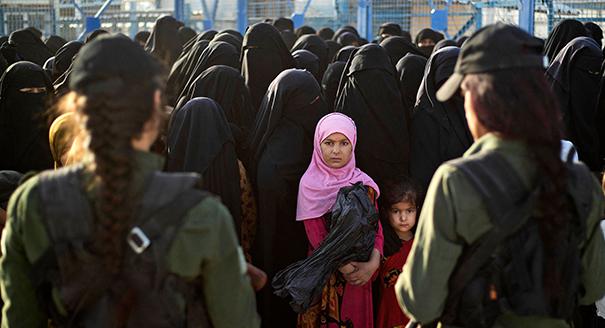The war in Syria has become confined to an arc in the country’s north, along the border with Turkey. In this area, stretching from Idlib Governorate in the west to the Jazira region bordering Turkey and Iraq in the east, there are now tens of thousands of combatants, including Assad regime forces and myriad other armed groups, including the Syrian Democratic Forces (SDF) and Hay’at Tahrir al-Sham. In addition, there are three Turkish “cantons”—one formed by the Euphrates Shield military operation, another formed by the Peace Spring operation, and Afrin. The northern border area is also home to a number of international forces, including American, Russian, and Turkish forces, as well as Iranian networks.
In this complicated context, the Syrian regime and Turkey may reopen political channels with each other, supplementing the security channels that were put in place after the coup attempt in Turkey in 2016. However, the reality is that the regime of President Bashar al-Assad is no longer capable of operating on a regional level. This has represented a major obstacle to transforming its military successes against the Syrian opposition into tangible political gains, which would allow the regime to reimpose its authority, therefore its legitimacy, on the whole of its national territory as well as regionally. That is why its priority today remains retaking the regions east of the Euphrates, with their economic resources such as oil, although this is not likely to happen in the foreseeable future.
The rapprochement between the Assad regime and the Turkish government will likely come within the framework of the Astana working group. This local-regional track, which includes Turkey, Iran, and Russia, was initiated in 2017. It has resulted in significant outcomes on the ground, and has changed the nature of the Syrian conflict from an effort to overthrow the Assad regime to one aimed at containing rebel groups within a limited geographical area, while delineating battle lines in Syria’s northwest. Despite the effectiveness of the Astana track, at the end of the day it is a security framework in which the interests of the parties overseeing the process overlap. This has provided the regime with an opportunity to regain the largest possible amount of territory it lost during the war. However, when it comes to reinstating the regime’s political authority, Astana has been wanting.
This is especially true of ties with Turkey. Despite the Assad regime’s military gains in recent years, the reestablishment of relations with Ankara has remained elusive. The principal reason for this is that the Syrian state has nothing much to offer of value to the Turks. Even in areas the Syrian army has retaken, the regime has been unable to impose full control, for example in southern Syria. This has made for a chronically unstable environment. Moreover, the Syrian economy today is an economy of scarcity, and Western economic sanctions have had a major political impact in terms of isolating the regime regionally and internationally. Furthermore, the Syrian state is weak administratively and in terms of governance, lacking qualified personnel to run state institutions.
However, the border areas in Syria’s northeast represent a potential meeting point between the interests of Ankara and Damascus. There, both sides have a common interest in dismantling the SDF project, namely the consolidation of an autonomous region that is effectively under the control of the Kurds, who dominate the SDF. However, this remains unlikely in the near term because of the presence of American forces, who are coordinating continuously with and supporting the SDF.
There are two potential sources of future instability in the eastern Euphrates region. The first is that if the SDF is removed, this may precipitate a security vacuum that creates an opportunity for Iran’s Islamic Revolutionary Guard Corps and its allies to expand north of the Euphrates, as they did south of it near Deir Ezzor. The general atmosphere in Syria’s northeastern Jazira region among leaders of the Arab tribes and clans is one of mobilization. There is communication between some tribal leaders and Iranian advisers. From the perspective of the Arab tribes, their region is under Kurdish rule. This has provoked Arab discontent, which is reflected in the significant polarization when it comes to issues of identity.
A second possible source of instability is that the Islamic State is still present in the area, including in the prisons and camps that were created to house the families of its members. The SDF still plays an important role in preventing the emergence of any new version of the Islamic State, which is precisely why the Americans have been so reluctant to go along with a Turkish offensive against SDF-controlled areas.
Without control over the eastern Euphrates region, the Assad regime will not be able to stabilize itself, and therefore will remain unable to operate regionally. This is well understood in Damascus. The regime has no choice but to wait for a regional shift in the coming years that can work in its favor in the border areas. One regime figure recently put it this way to me: “The problem in Syria will not be resolved until Turkey falls apart.” This may wishful thinking, but it is the Assad regime’s only vision for a solution, and so is repeated in the hope that one day it will become a self-fulfilling prophecy.







